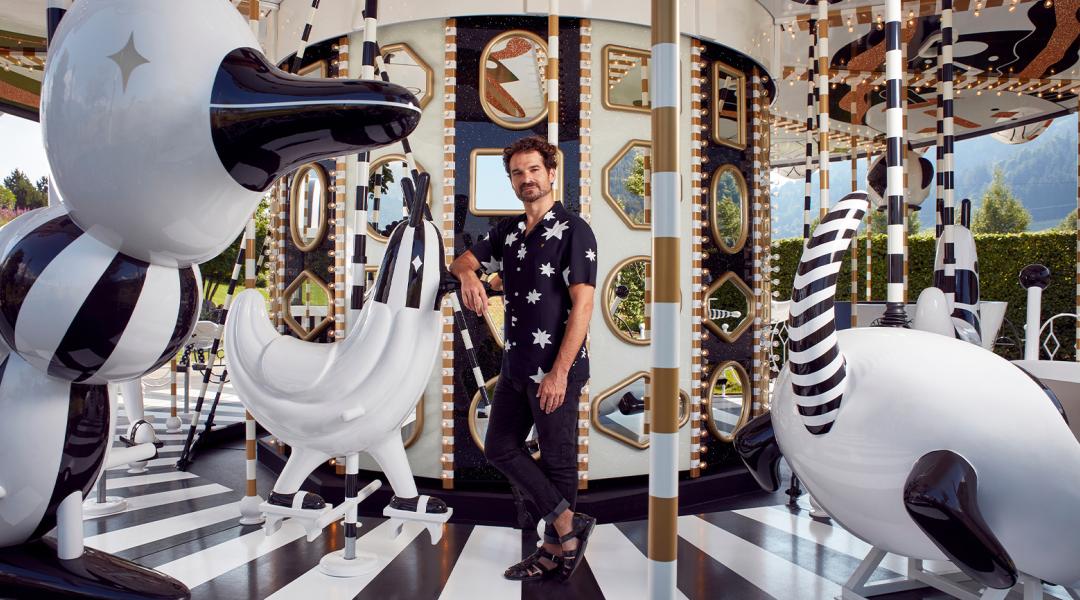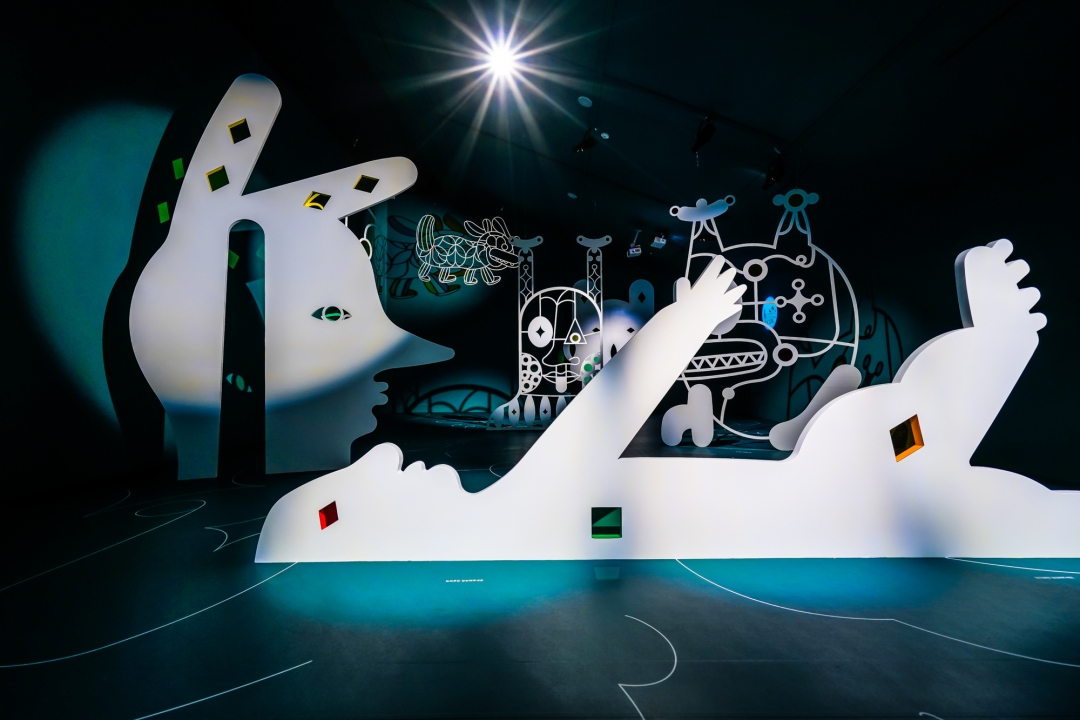Jaime Hayon
Mediterranean Boldness

Jaime Hayón has proved there is emotion in functionality and that porcelain has a second reading. His universe finds in imagination its most powerful resource. No wonder he is the most influential creator of his generation. We chatted with him about how to conquer a territory few designers dare to conquer: playful designs that draw a smile on your face.
Times magazine named him one of the 100 most relevant creators of our time. Wallpaper Magazine, a bible for designers, has recognized the work of Jaime Hayón (Madrid, 1974) on eight occasions. This year, the Lightolight lamp for Parachilna won him his latest award. Without a doubt, he is the most influential designer of his generation, one who has established a dialogue between art, decoration, and design. Hayón expresses this dialogue in his own universe but also in collaborations with a varied range of brands who have surrendered to his ingenuity, including Lladró, Baccarat, Cassina, Fritz Hansen, and Swarovski. He has also placed fantasy at the centre of his work: “We arrive in the world with a very active imagination and, for some reason, we turn away from that wonderful quality.” His playful narrative suits hotels, art galleries, restaurants and art installations alike. In fact, the emotion and humour he lends to everything he touches have earned his pieces a place in the permanent collections of museums such as the Centre Pompidou, whose cafeteria, inaugurated in September, he has decorated himself.
Your work is so varied, it could be said you can carry out any kind of project. How do you manage to always see an opportunity?
Challenges are my main motivation. Peeking into new windows and being able to explore through them amazes me and keeps me connected to myself. Challenges and unknown universes are what attract me the most. I’ve learned everything I know by trying different things. The only thing I fear is boredom. Opportunities for knowledge and learning are the flames that keep me active.
Your designs are vital and constructive, are these also features of your personality?
I would say they are because I can’t do anything else, really. I try to convey the way I see the worlds around us, the little things we find in our everyday life that make us smile, but also unabashed imagination.
You have sometimes said that design isn’t just about functionality, something that is made evident in your creations for Fritz Hansen. How do you convince them to introduce emotion in their Scandinavian philosophy?
I'm interested in what goes beyond design, while at the same time considering everything design has to offer: quality, materials, techniques... They are essential, but the difference between a chair and being hugged by a bear is a connection design can establish. In addition to solving specific needs, design contributes with stories and emotion. That is the kind of design that motivates me and the space where I find the chance to express myself and connect. With Fritz Hansen I have created many collections over the past years, and I have learned a lot about comfort, technical and craft skills, and about balance and patience. In turn, they have learned to let themselves go a little more, daring to carry out proposals that would have never come out of their cultural design tradition. The mixture between the Scandinavian tradition and the boldness and gestures of the Mediterranean culture has yielded very interesting results I’m very happy about.
“The difference between a chair and being hugged by a bear is a connection that design can establish”
This is how you turn everyday objects upside down to create extraordinary things. Is this something that has always been in you or something you have discovered throughout your career?
I used to call it the “third eye”, but it was never clear to me whether the concept was understood without it sounding pretentious. The description struck me as very figurative, since I imagined a head with three eyes; two of them seeing what we have in front of us and the other one, free and adventurous, devoted to thinking about how that reality could be. Imagination and fantasy have always been present in me; I can never contain them because this is how I see my surroundings. I keep on finding ideas for expression in the most anonymous objects. Masks and totems have always existed. Are they objects? Yes, but they are much more than that.
In a presentation at the University of Michigan, you said that when you started your career, the design landscape was boring. Has the situation changed?
A lot. We have gone overboard and are demanding design the same pace as fashion. Everything has changed in the past 20 years. The current era of communication has transformed the rules of the game and what we are able to experience. Design has been more or less successful, but the landscape has become more dynamic and disciplines intersect more. I used to always complain about categories: “Is it design? Is it art?” Ultimately, what is really important? The fundamental thing is that it works for us and moves us.
You said you started working with ceramics because it was cheap. Are you still working with it? What do you find so fascinating about it?
I started experimenting in Italy with a very nice manufacturer (Bosa) that allowed me to do all kinds of crazy stuff in their workshop. All that ended up being exhibited in a prestigious gallery in London and sold to collectors. Next year will mark 20 years since we started collaborating and, together, we have carried out a number of experiments that have served as a platform to develop many ideas that have generated infinite stories. Meanwhile, we’ve had the chance to explore ceramics from the vantage point of different traditions and cultures. I made a collection with a Japanese company with a very long tradition; several collections with Lladró, which has a more figurative heritage; as well as porcelain explorations with terracotta... I’ve always worked with fired clay. I have learned and grown a lot thanks to it.
Your work has an avant-garde quality to it, but how important is craftwork for you?
Craftsmanship is the cultural foundation of work. It is the human element that makes each sector or company especial. It is where tradition and history meet. I want to learn from and about crafts to make them relevant and valuable in the contemporary world.

Installation Hayón Shadow Theater in the exhibition Jaime Hayon: Serious Fun. On show from 27 April to 17 November 2019 at the Daelim Museum in Seoul. ©Courtesy of Jaime Hayon
You’ve had a studio in Valencia for a few years now. How did you welcome the news that it will be the International Capital of Design in 2022?
Valencia is a wonderful city. I have lived here for years and I think it’s an exceptional place. I was in contact with the organizers throughout the process and have been active in supporting the candidacy. I invite my clients from all over the world to the Valencia and when they leave, they’re always happy to have been in such a special place: there’s warmth, quality, tradition, imagination, history, and innovation. Is there a better way to promote design?







